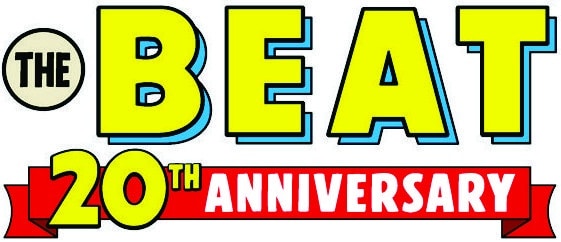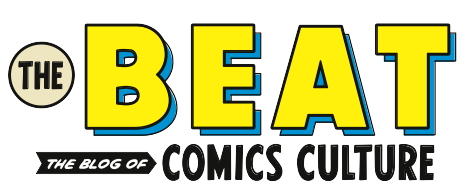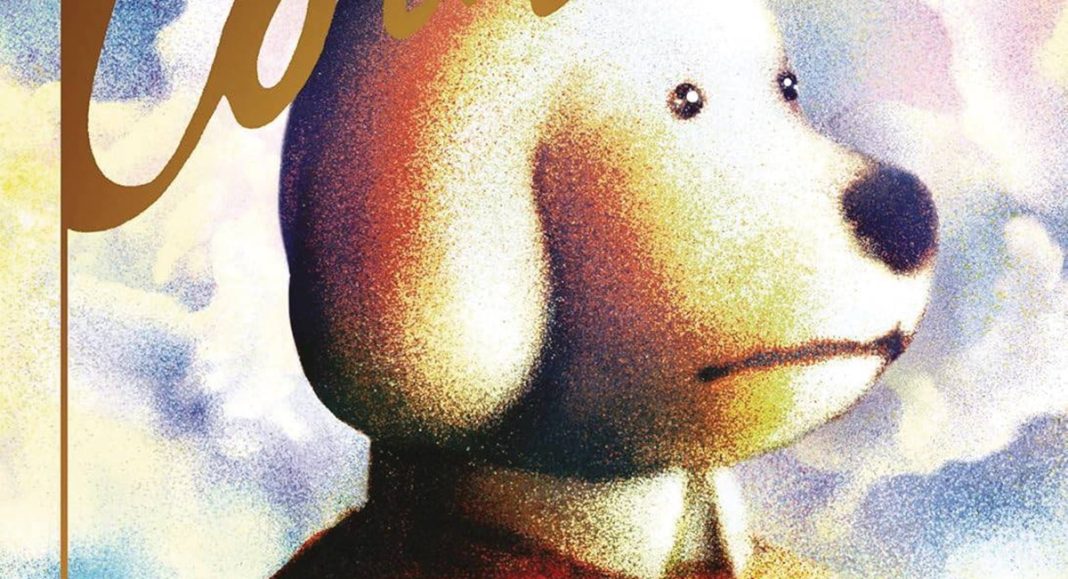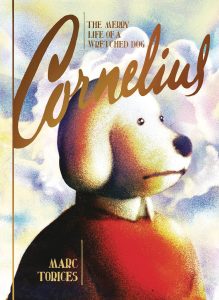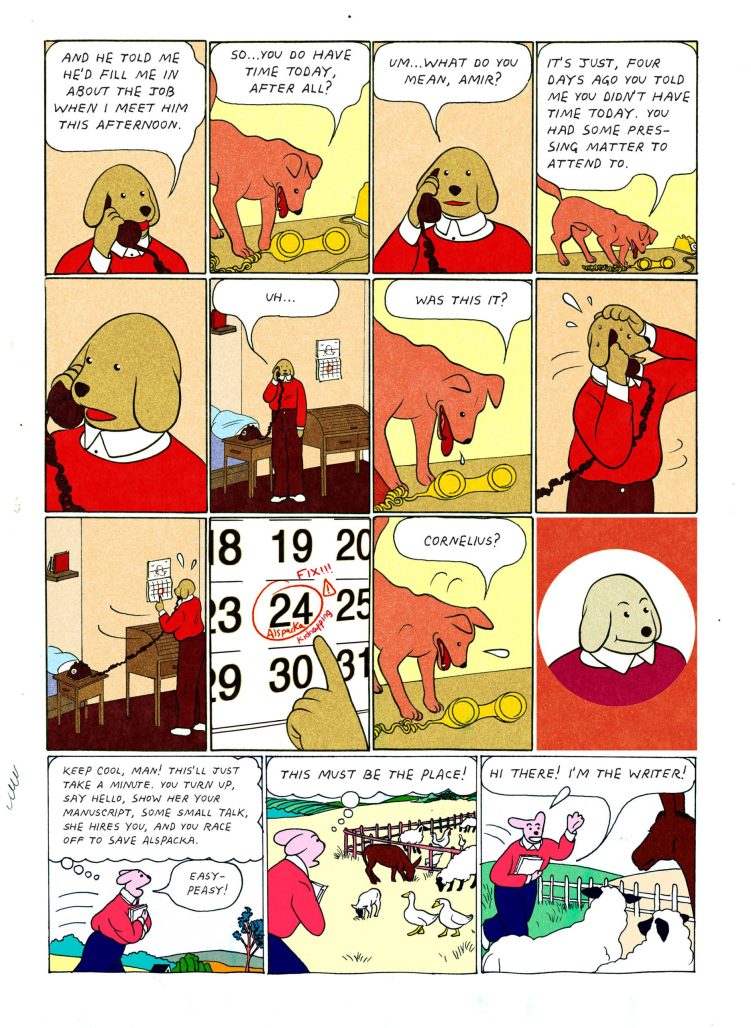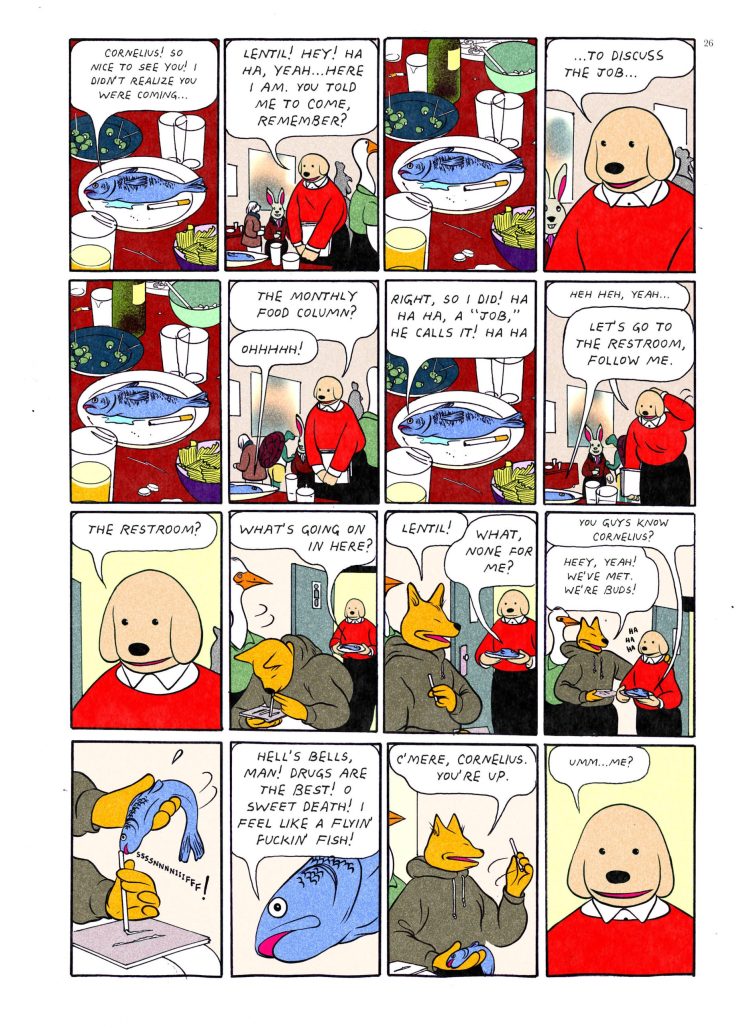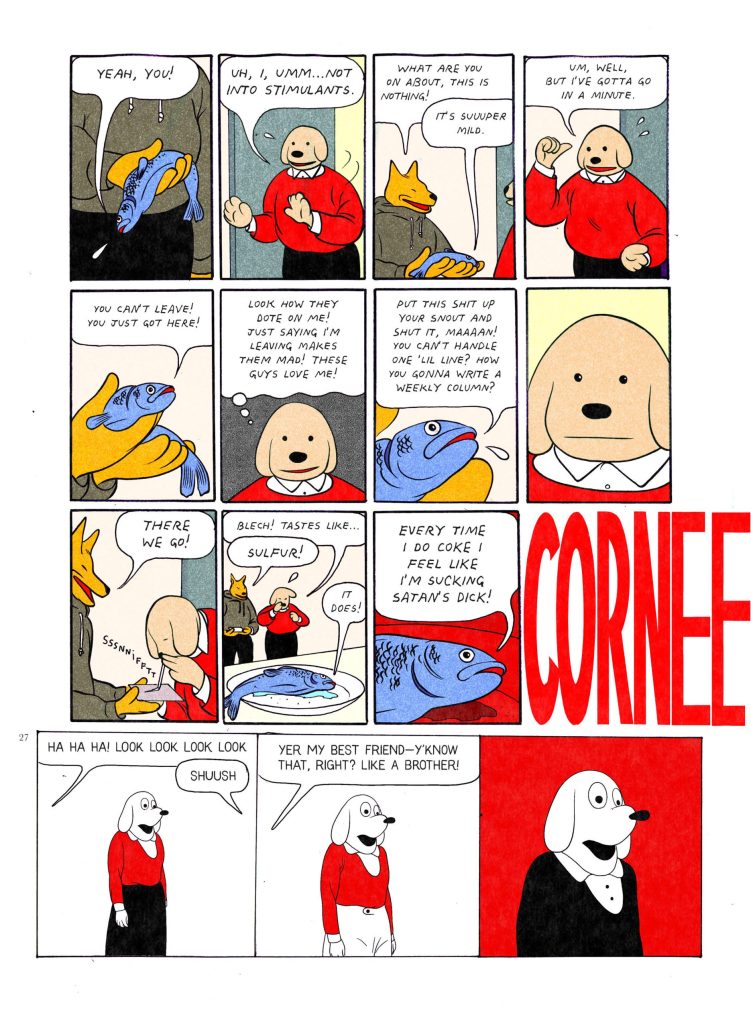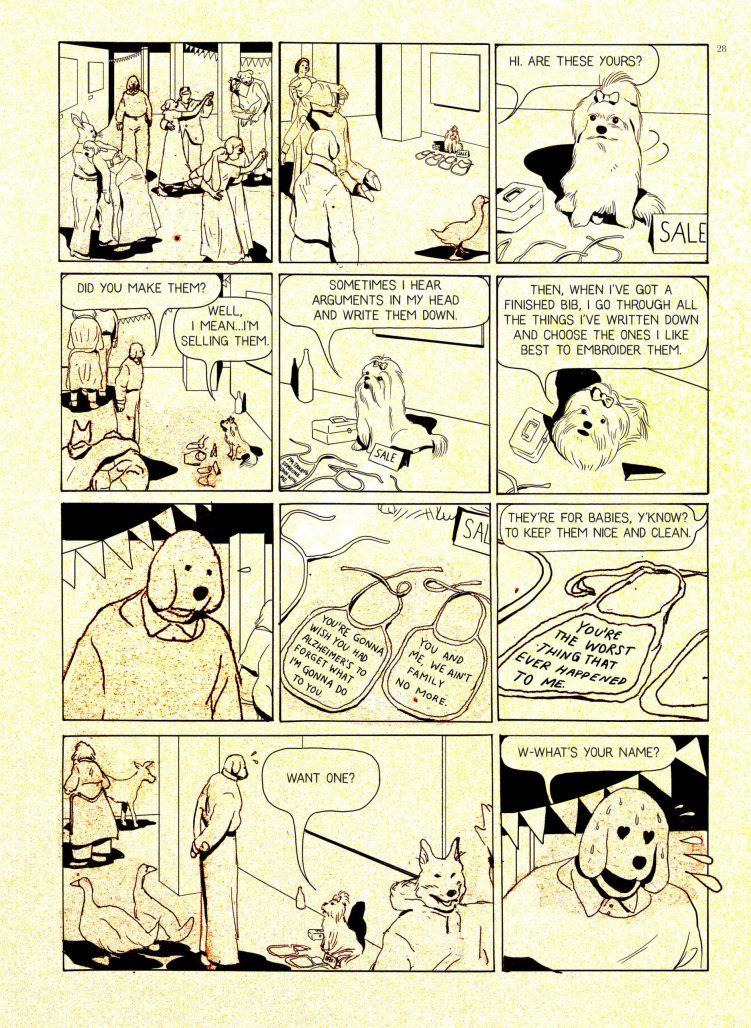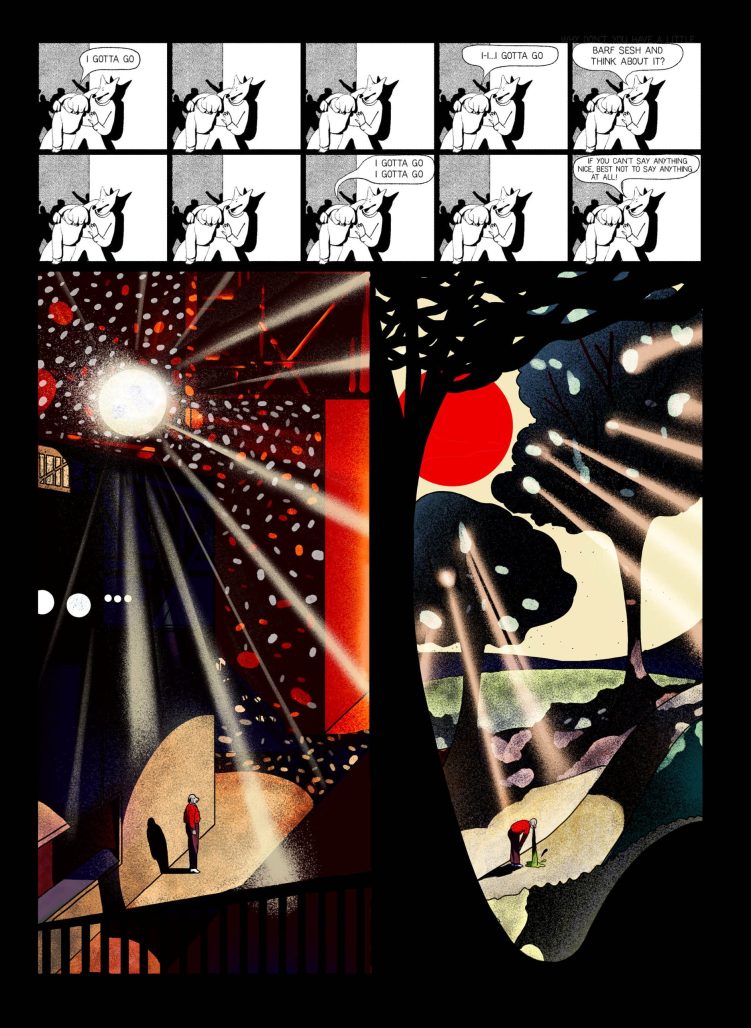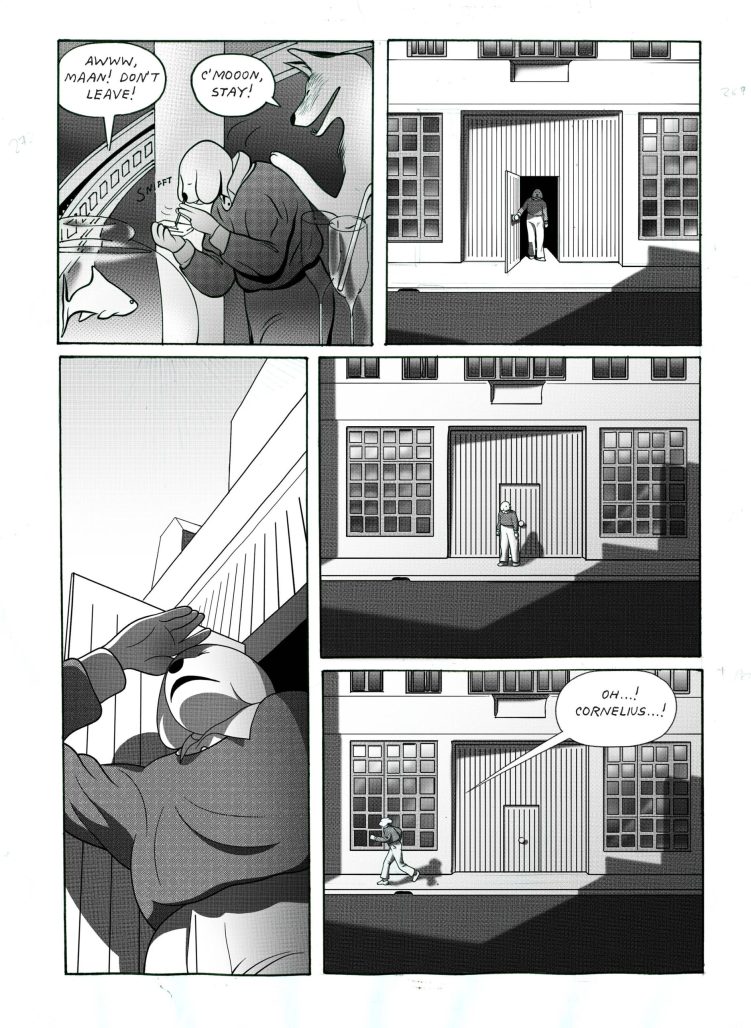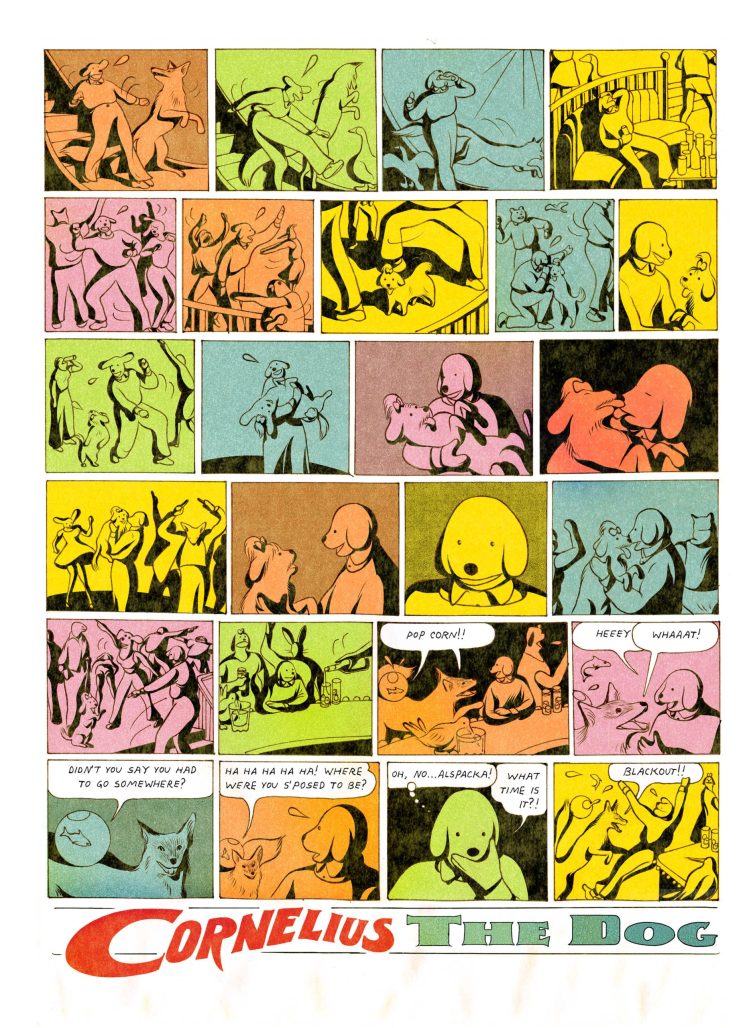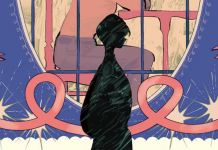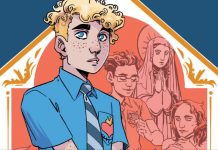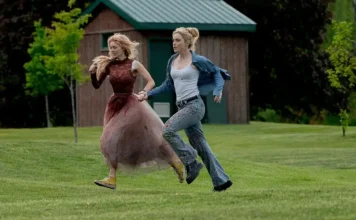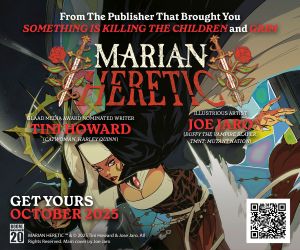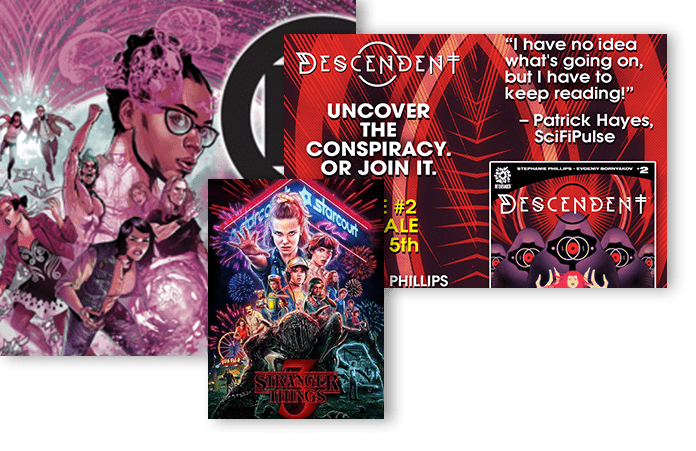 Cornelius – The Merry Life of a Wretched Dog
Cornelius – The Merry Life of a Wretched Dog
Cartoonist: Marc Torices
Translator: Andrea Rosenberg
Publisher: Drawn & Quarterly
Publication Date: June 2025
Three hundred years ago, or maybe it was in the late 1890s but most definitely sometime in the 1930s … or potentially the 1940s? Anyway, at some point the world was introduced to Cornelius the Dog, and things were never the same. A marketing icon, literacy advocate, authoritarian collaborator, corporate money maker, Cornelius has appeared in somewhere between thousands to hundreds of thousands of comics, potentially even millions. Never heard of this classic of cartooning history? That’s because cartoonist and animator Marc Torices completely made it up.
Cornelius: The Merry Life of a Wretched Dog, written and drawn by Marc Torices, translated from Spanish by Andrea Rosenberg, is a series of complex, absurd comic strips/short comics that followthe anthropomorphic dog Cornelius’s life while playing with the ephemera of the world of comics. It’s a bit of a wild ride, so hang on to your Avalutsa plushie (she’s the frog) and get cozy in your Ploisploy jammies (he’s the roommate who is a dog on two feet, never on four). Here we go.
The narrative of the book is relatively simple and an easy place to start. The main character, Cornelius, is a janitor at a gym where he is friends with the boss’s niece, Alspacka. Relatively quickly, Alspacka is kidnapped, and Cornelius “aids” in this by not helping her fight back and not helping in the investigation in a plethora of ways, including purposefully throwing away the ransom note. Cornelius then tries to achieve his dream of being a writer, moves in with a frog and bird (the bird is sometimes a pigeon and sometimes other birds), gets a girlfriend, loses a girlfriend, and does nothing (not nothing nothing but pretty much nothing) to help Alspacka return home. There’s a lot of nonsense that happens between, including a potential collaboration with a hippo, a cat investigator sleeping with the other cat’s wife, and Cornelius’s first time doing cocaine in a bathroom with a fish and a fox. But, basically, that’s the plot, laid out as simply as possible.
Torices’s book isn’t interested in plot, though. It isn’t what makes Cornelius compelling. Instead, it’s the ways in which Torices weaves in fake world events, shifting homages to comics’ history, wry and dry humor regarding comics and its fans, and leans hard into the nonsensical that make this book something unique.
From the very beginning of the book, there’s a sense that Torices is at play. The prologue promises that this book is the first in “a series of 40-volumes that will trace the trajectory of Cornelius the Dog” and that this book is in celebration of the character’s 300th birthday. Since most people picking up this book will have a passing knowledge of comics, this is a clear indicator to not take everything as literal truth. While I can imagine a random person picking up this book and being turned off by the possibility of having to invest time in an additional 39 volumes, it feels unlikely. Unlikely, but incredibly amusing to imagine.
The play continues as soon as you start reading. The dialogue and narrative feel reminiscent of an Ed the Happy Clown or other underground comix, but the art stands out. Throughout Cornelius, the visual styles continue to shift and change, displaying a wide range of Torices’s talent as an artist. The book contains homages to different comics creators of the past (a particularly obvious Winsor McCay one brought me immense joy) as well as the present, which stun with the range of artistic styles that Torices emulates. From pages where characters are colorful primary shapes and lines to detailed paintings of Cornelius vomiting to a traditional auca (a new to me comics form), almost every page sees a shift in the type of art that Torices deploys.
This does give the feel that this book is a collection of different artists’ interpretations of the character Cornelius, which adds to the fun of the book. There’s an impression that these strips were carefully researched and curated to make this specific narrative make sense. As though finding the individual comics were an archival project. This is compounded by the ways in which the outside of the panels and comics page have pencil marks, ink stains, or other marginalia kept inside. One page has what looks like a blood stain at the bottom, while others have arrows, page numbers, or notes. This works with the entire idea of the book; one where Torices used whatever copies of the “issues” he could find out in the wild then cobbled them together as best he could. The fact that this is not true, that all of this is of Torices’ own design, helps add to the whole project that he’s taken up.
The way that Cornelius is structured like a collection of strips with historical/contextual notes in the back gives the book a feel of artifact or recovered works. My favorite part of this book design and structure is that in the notes, some of these strips are given dates from the early 1900s all the way to the 2000s. But, within many of the strips, Torices has signed them and dated them with the actual dates that he drew the strips (between 2018 to about 2023). This provides another layer of disconnect between the reality of the strips (all made by Torices’s own hand and experimentation) and the “reality” provided within the notes by Torices. It’s a great insight into the fact that the book isn’t trying to trick the reader into believing that these comics were actually released eighty years ago, but instead plays with the concepts of collection itself.
Cornelius constantly shifts and changes, presenting nonsense as logical progression from one moment to the next. It is, admittedly, difficult to follow what Torices has in mind until you start to notice the footnote numbers that pop up periodically. These bring you to an extensive notes section at the back of the book which give a wider picture of how deep Torices wants to take us, and how far the author has gone in creating a completely new world and history. It’s in these notes that the ideas and playfulness of the book became most apparent. I’m not sure how you usually read endnotes in your books, but I would strongly suggest reading these as you come across them. Not only do they provide a bit of a break from the absurd narrative and the visual shifts inside, they provide a larger world of context.
The notes section is the clearest Torices’s absurdity gets throughout the book. If the book contained just the Cornelius story, we could eventually figure out that there was some fun, some joke being had, but we wouldn’t be in on it. It would be a joke for Torices and maybe a few other people who did “get” it. But, these notes allow the reader more spaces to enter. They provide opportunities to understand the comedy within. Even more importantly, they relieve tension with the reading experience. Not being in on the joke isn’t fun, so being able to fill in contextual moments allow space for the comedy to worm its way in.
In addition, the notes provide faux history of the strip and character which ranges from tidbits about side characters to corporate acquisition of the SLAKR group which “publishes” Cornelius. These moments are always tinged with the extreme. One note tells the story of two thousand people crushed when the building the comic was printed in collapsed leaving the publisher to adopt over 500 orphans. Or you have the Chucklesome Era where a dictatorship tried to legally incorporate Humorism into their national identity using Cornelius as mascot. Or a program to send dogs into space to make Cornelius universal.
These notes are often specifically poking fun at historical notes found in collections of old comic strips that have gotten a recent reprint. They play with fandom, materialism, politics, as well as circle around the world of comics with references to things like Tijuana bibles. These jokes are meant for an audience entrenched in the world of comics and show that Torices is deeply embedded in it as well. Because of this focus, some of the jokes don’t land as effectively as others. The conversations that come up around assault or the trans joke made within one note, feel like I’m missing some key context to a historical event or just aren’t effective outside of Torices’ cultural experience. In comparison to the extended joke of the writer who, instead of writing a script for an issue inserts a rant about being attracted to a random woman he saw walking across the street, which walks the line between offensive and subversive quite expertly, these other notes seem to fall into a “why” or “I don’t get it”.
It might miss the goal at times, (most often because Torices is at play with context here; what is missing and what isn’t) but at least the book takes swings. Cornelius is not the type of book you’re taking to the beach this summer, nor is it the book you enjoy on your patio with a morning cup of coffee. It’s more the book you take on the plane because you’re afraid it might fall out of the sky (reasonable fear these days) and need something to distract you for the ride. It’s not an easy read and isn’t meant to be. It provides no deeper insight into the world than what it is; an absurd series of loosely connected artistic homages set in a world as cruel and meaningless as our own.
Though this might be the insight that some of us need; that the world is literally something we’ve made up. That we continue to make up. Every day. We just follow along a series of disconnected events, never fully getting the whole context of what is happening to us, hoping that there is something at the end that brings it all together. We know there won’t be a neatly tied bow at the end. But we push forward anyway through cruelty and nonsense and the absurdity of waking up to go to a job cleaning a gym.
Or, it’s just about Cornelius the Dog. Wonder what misadventures he’ll get into in the other 39 volumes.
Verdict: If you like the absurd, the difficult, the rewarding; it’s worth every moment of your time.
Cornelius – The Merry Life of a Wretched Dog is out soon from Drawn & Quarterly
And check out the Beat’s most recent comics reviews!
